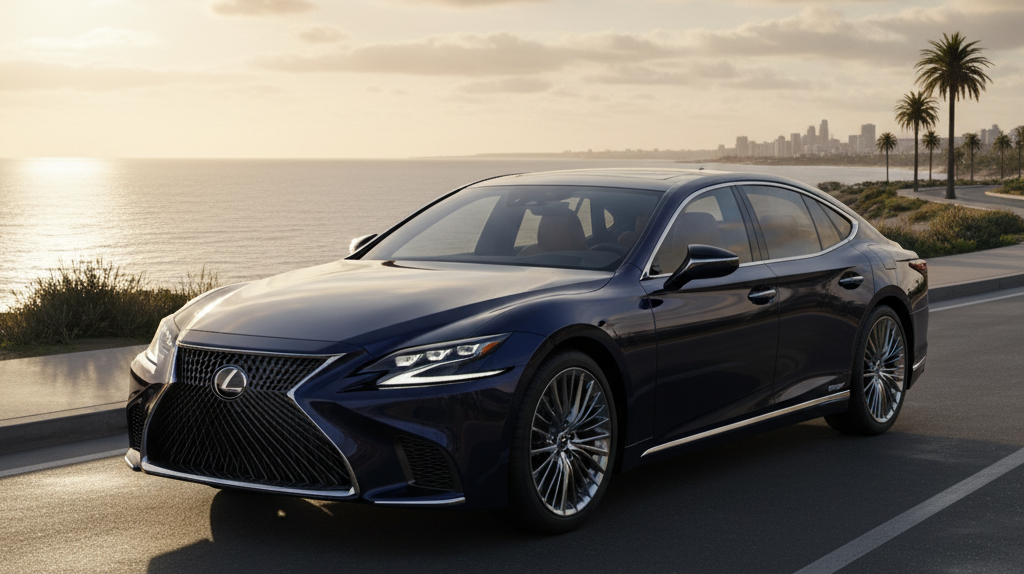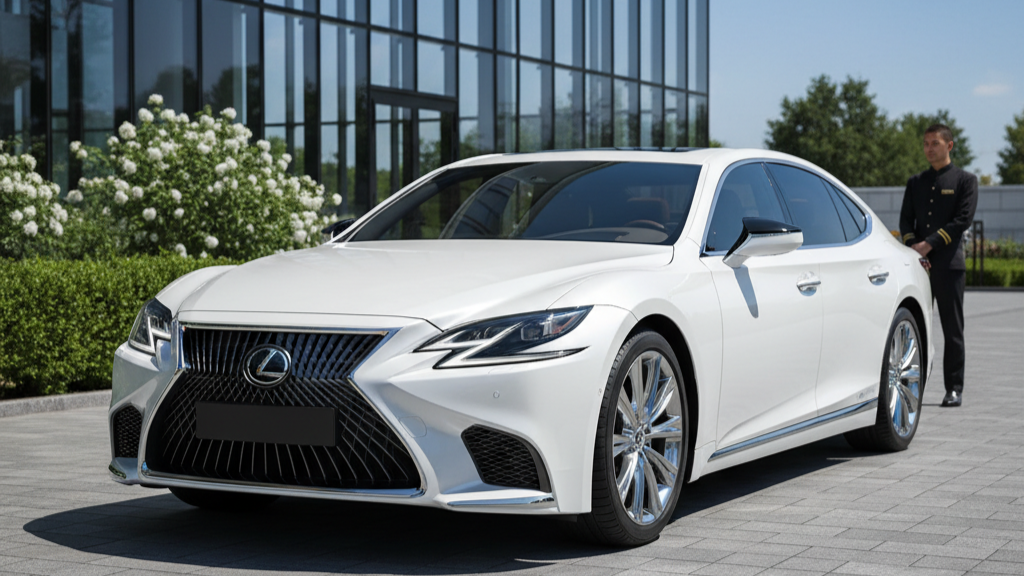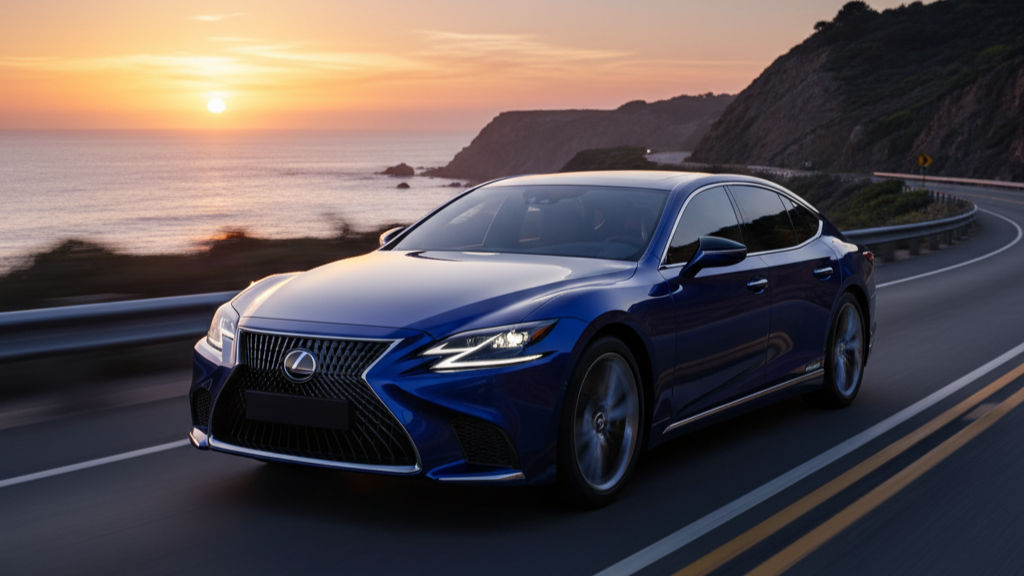Lexus LS Ownership Costs vs. German Rivals
Published on: Tue Oct 22 2024
Practical Information Summary: Lexus LS
Overview
The Lexus LS is the flagship sedan that launched the Lexus brand in 1989. It was built with the singular goal of outperforming the established German luxury titans (like the Mercedes-Benz S-Class) in every measure of comfort, quietness, and, most importantly, reliability. This philosophy continues to this day. The LS prioritizes serene isolation and flawless build quality over sporty dynamics, offering a different, more zen-like approach to flagship luxury. This guide will focus on the highly popular XF40 generation (LS 460 & LS 600h, 2007-2017) and the current XF50 generation (LS 500 & LS 500h, 2018-present).
Ownership Costs
The Lexus LS presents a fascinating value proposition. While its initial purchase price is high, its long-term ownership costs are significantly lower and more predictable than its German competitors, primarily due to its outstanding reliability.
Vehicle Price
- New (XF50 generation): A new Lexus LS 500 starts at approximately $80,000. Fully optioned models, especially the hybrid LS 500h, can approach $115,000, placing it firmly in flagship territory, though often slightly undercutting a similarly equipped S-Class or 7 Series.
- Used Market: This is where the LS becomes exceptionally compelling. Like all flagship sedans, it suffers from heavy depreciation.
- XF50 (2018+): Early models can now be found for $45,000 - $60,000, a massive discount from new.
- XF40 (2007-2017): Offers incredible value. Facelifted models (2013-2017) with the updated “spindle grille” and improved tech are highly desirable and can be purchased for $20,000 - $35,000. Pre-facelift models can be found for as low as $10,000-$18,000, offering unparalleled luxury for the price of a basic new sedan.
Taxes, Insurance, and Fuel
- Insurance: While still a high-value vehicle, the LS often has slightly lower insurance premiums than its German counterparts. This is partly due to a less aggressive driver profile and lower parts/labor costs for repairs.
- Fuel Economy:
- LS 500 (3.4L Twin-Turbo V6): Averages around 21-23 MPG in mixed driving.
- LS 500h (3.5L V6 Hybrid): Averages around 25-28 MPG, offering a tangible efficiency benefit.
- LS 460 (4.6L V8): Averages around 18-20 MPG.
- Fuel Type: Premium (91 octane or higher) gasoline is required for all models.

Maintenance
This is the Lexus LS’s trump card. Maintenance is not cheap—it is a complex luxury car—but it is significantly more affordable and predictable than its rivals.
Routine Service
- Oil Change: Recommended every 10,000 miles or 1 year. Cost at a Lexus dealer is typically $150-$250. An independent Toyota/Lexus specialist can often do it for under $150.
- Minor/Major Services: Lexus follows a schedule of minor services (inspections, tire rotation) and major services (fluid changes, filter replacements) at 15,000/30,000-mile intervals. Even a major 60,000-mile service at a dealer, which includes spark plugs and brake fluid, is often under $1,000, which is significantly less than a comparable service on a German flagship.
- Brake Life: The hybrid models, in particular, have extremely long brake life due to regenerative braking, often exceeding 80,000-100,000 miles on a set of pads and rotors.
Key Maintenance Considerations
- Toyota Parts Bin: Many mechanical components are shared with or based on high-volume Toyota products, making parts more readily available and affordable than bespoke German components.
- Labor Rates: Lexus/Toyota dealer labor rates are generally lower than those at Mercedes-Benz or BMW service centers.

Reliability & Common Issues
Legendary. The Lexus LS is arguably the most reliable flagship luxury sedan ever made. It is engineered for a 20+ year service life with regular maintenance. While no car is perfect, the common issues on an LS are often minor or are considered normal wear-and-tear items on other cars.
Common Issues (XF40 Generation: LS 460/600h)
- Control Arm Bushings: The multi-link front suspension has numerous control arms with fluid-filled bushings designed for a plush ride. These are a known wear item and will fail every 60,000-80,000 miles, resulting in clunking noises and imprecise steering. Replacing all front control arms is a common, albeit expensive, maintenance job costing $2,000-$4,000. Using high-quality aftermarket parts can reduce this cost.
- Air Suspension: Like every car with this feature, the air suspension is a point of failure. The struts will eventually leak. However, they are generally considered more robust than German systems. A failure is still expensive, at $1,000+ per corner, but many owners see well over 100,000 miles before issues arise. Coilover conversion kits are available for those who want to eliminate the risk entirely.
- Melting/Sticky Interior Trim: On early models (2007-2010), the dashboard and door panel materials could become sticky or “melt” in high-heat climates. Lexus initiated a warranty enhancement program to fix this, but it’s something to check on an older used model.
XF50 Generation Reliability (LS 500/500h)
- Engine: The move from a naturally aspirated V8 to a twin-turbo V6 in the LS 500 introduced complexity. While the engine has proven very reliable, it runs hot and has more plumbing and potential failure points than the old V8. It has not, however, shown any widespread, systemic faults.
- Infotainment: The Lexus Remote Touch interface is a common complaint from a usability standpoint. Early XF50 models also had some software glitches, but these were largely resolved via dealer-installed updates.
- Hybrid System: The Lexus Hybrid Drive system is famously reliable, with many examples in other models (Prius, RX) lasting well over 200,000 miles with only routine maintenance. The high-voltage battery is designed to last the life of the vehicle.

Used Market Guide
The used Lexus LS market is a haven for savvy buyers who want maximum luxury and reliability for their money. The car’s heavy depreciation combined with its low running costs creates an unmatched value proposition.
What to Look For
- Impeccable Service History: While it is a Lexus, a full service history is still paramount. It shows that the previous owner cared for the vehicle and performed the necessary preventative maintenance. A car serviced exclusively at a Lexus dealer is the gold standard.
- Pre-Purchase Inspection (PPI): A PPI is still highly recommended. A specialist should focus on the key wear items: listen for suspension clunks (control arms), test the air suspension by cycling through its height settings, and ensure all of the myriad luxury features (e.g., massaging seats, power sunshades) are functioning.
Buyer’s Checklist
- Suspension: During the test drive, drive over uneven pavement and listen carefully for any clunking, creaking, or popping sounds from the front end. This is the primary indicator of worn control arm bushings.
- Air Suspension Check: Let the car sit for 30 minutes after the test drive. Check to see if any corner has sagged, which would indicate a leak.
- Electronics Deep Dive: The LS has an incredible number of features. Patiently test every single button. Check the heated/cooled seats, the Mark Levinson audio system, the navigation, and all the seat adjustments.
- Interior Condition: Check the dashboard and door panels for any signs of the sticky trim issue on pre-2011 models.
Verdict
The Lexus LS is the thinking person’s flagship sedan. It forgoes the flashy performance metrics of its German rivals in favor of a relentless pursuit of quality, comfort, and peace of mind. As a used car, it is a spectacular bargain, offering a $100,000 experience for a fraction of the price, without the terrifying repair bills associated with its competition. For a buyer whose top priorities are luxury, serenity, and predictable ownership costs, there is simply no better choice in the high-end sedan market. Outstanding value in luxury sedan segment. Lower running costs and superior reliability make it a smart choice.